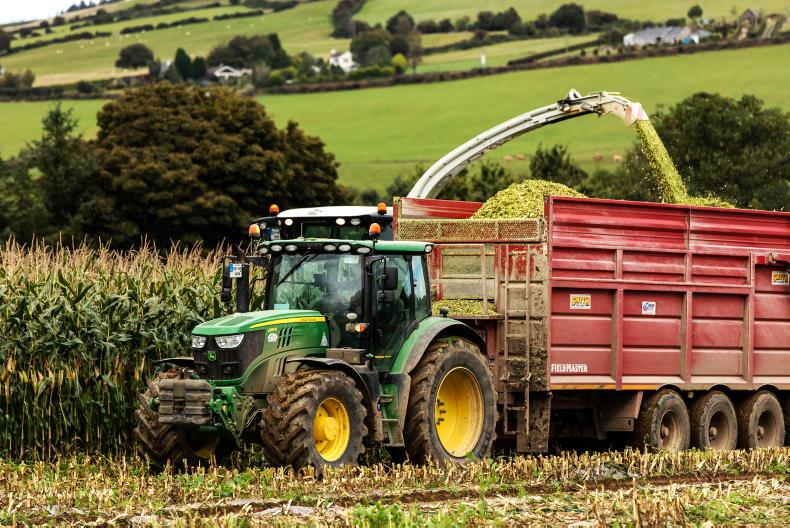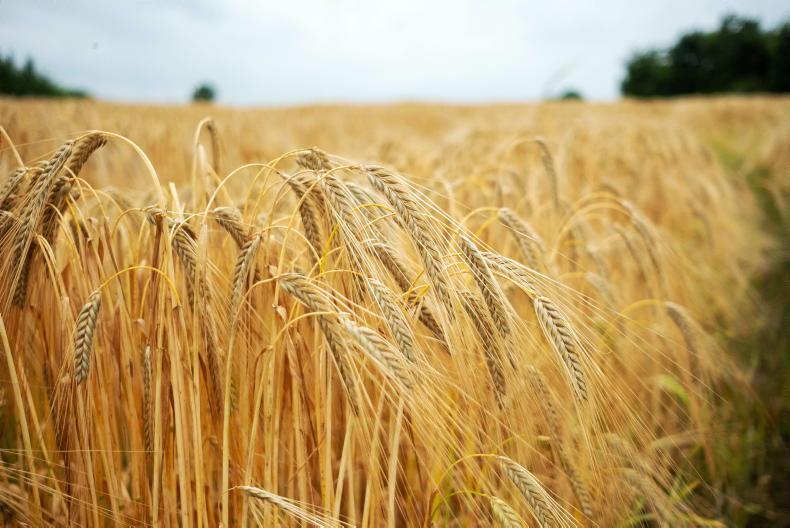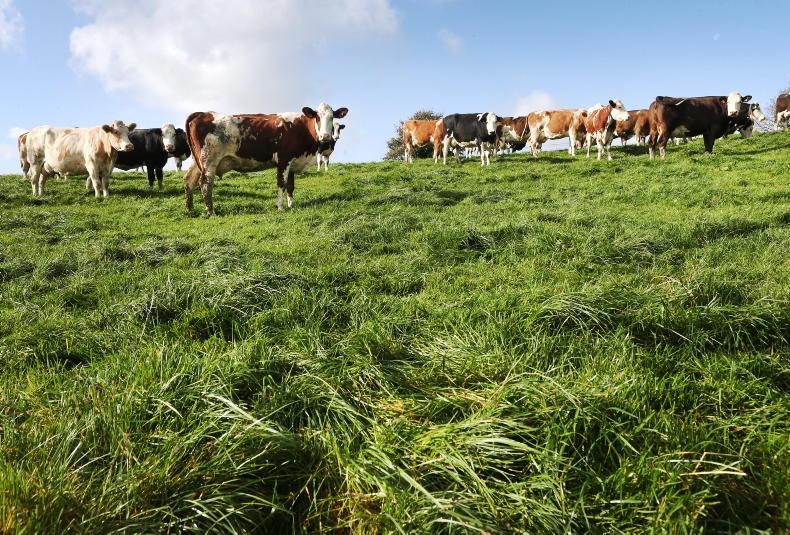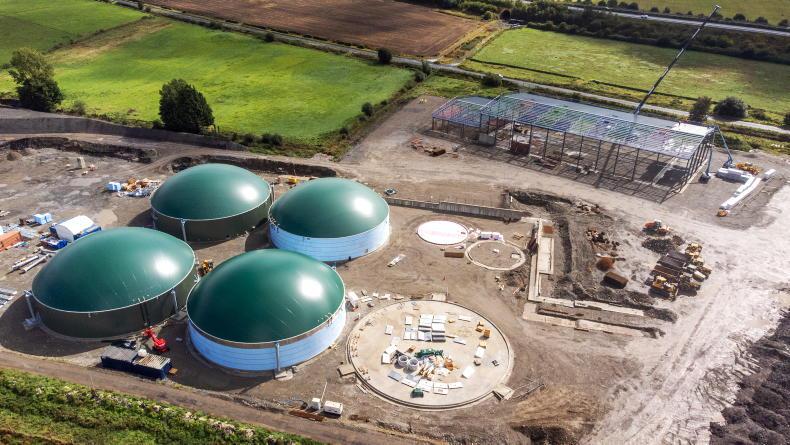A new analysis on the costs of feed stuffs was carried out by Teagasc and published here by the Irish Farmers Journal on Thursday.
Taking into account rising fertiliser, fuel, contractor and plastic costs, the cost of grass silage is set to increase by 31% this year, with a round bale of silage costing €46 to make.
On a per-tonne of dry matter (DM) basis, first-cut grass pit silage is costing €204/t, second-cut grass pit silage is costing €239/t and maize silage is costing €219/t.
When you combine the yield of first cut and the yield of second cut grass silage and compare them with maize, the cost per tonne DM is similar between both maize and grass silage.
Better on energy
However, on an energy basis, maize fares better; compared with the cost of grazed grass per energy utilised, first cut is 3.2 times the relative cost, second cut is 3.7 times and maize is three times the relative cost.
This is the big selling point of maize – good maize delivers high yields of high-energy feed at a lower cost per UFL than grass silage.
Where maize is sown into permanent pasture, the field will be eligible for the €400/ha fodder incentive announced by the Department recently.
This will reduce the cost per tonne DM by €30 if the field yields 13t DM/ha.
Downsides
Next comes the downsides; the first thing to remember is that maize is high in energy, but low in protein.
Protein needs to be balanced in the diet through concentrates and this could be a challenge next winter, as all concentrate feeds are going to be expensive and in scarce supply.
The energy or starch levels in the maize will be variable depending on the weather and the amount of sunshine received over the growing period.
Maize plastic is technically no longer available for use, although I hear that some supplies are still available.
Sowing without plastic will reduce the yield, but this is offset by not having to carry the cost of the plastic.
It will be a very expensive crop to grow this year if using chemical fertiliser
Maize has a high nutrient requirement, so is ideally suited to situations where slurry can be spread.
With the high cost of fertiliser, it will be a very expensive crop to grow this year if using chemical fertiliser.
Comparing like with like
Another thing to keep in mind when comparing crops is that while a well-managed grass sward will yield 13t DM/ha and a well-managed maize crop will do similar, you are not really comparing like with like.
For example, let’s say that a grass field was ploughed for maize on 10 April and 13t DM/ha was harvested on 1 October.
That crop has yielded what would be expected from a good field of grass.
If the field is destined for maize again next year that’s fine, but if the plan is to put it back to grass, the loss of production while the new sward is being established needs to be taken into account.
Realistically, it’s unlikely to get grass seeds sown in October. The next available chance is probably mid-April, meaning it will be mid-June before it will be productive again.
Effectively, a field of maize is out of production for at least 14 or 15 months.
These issues need to be borne in mind before farmers commit to maize.










SHARING OPTIONS